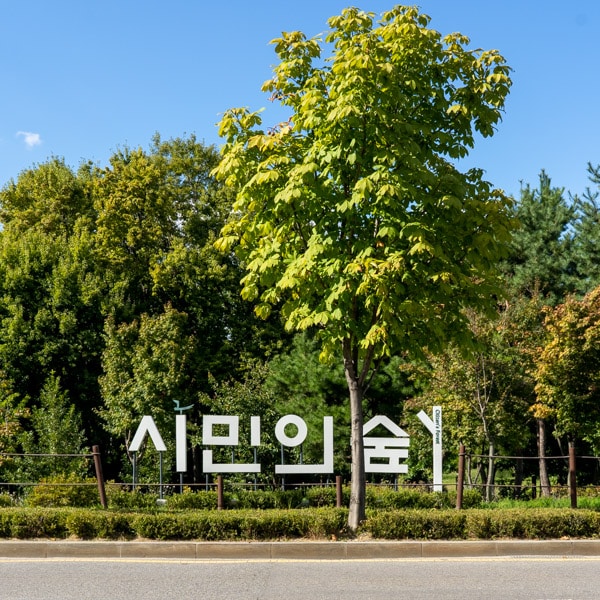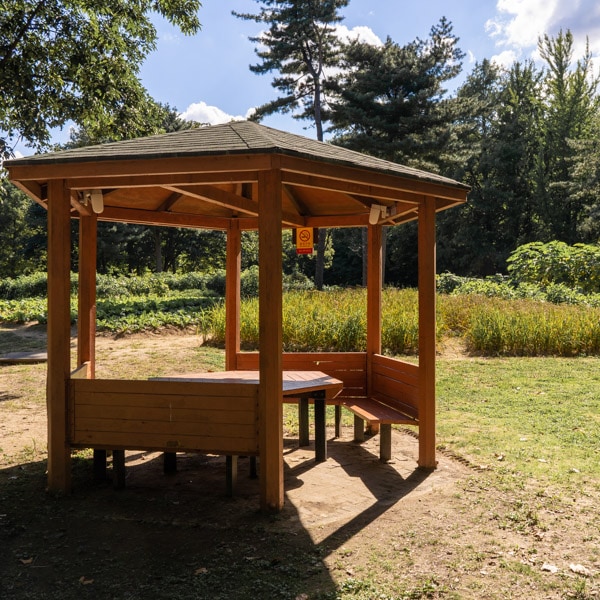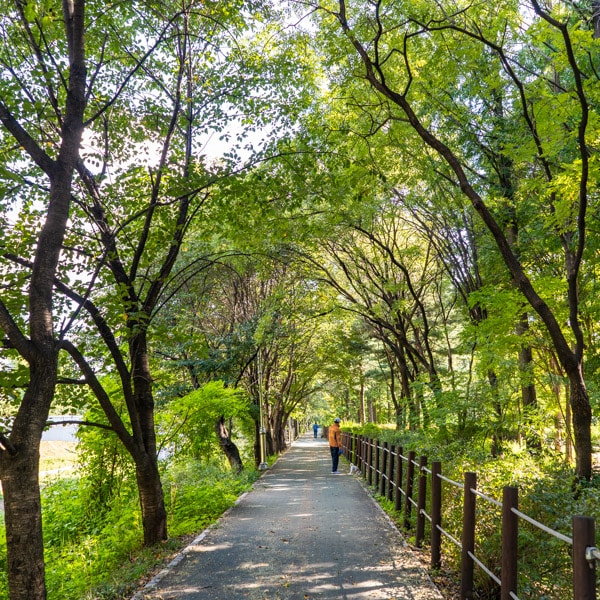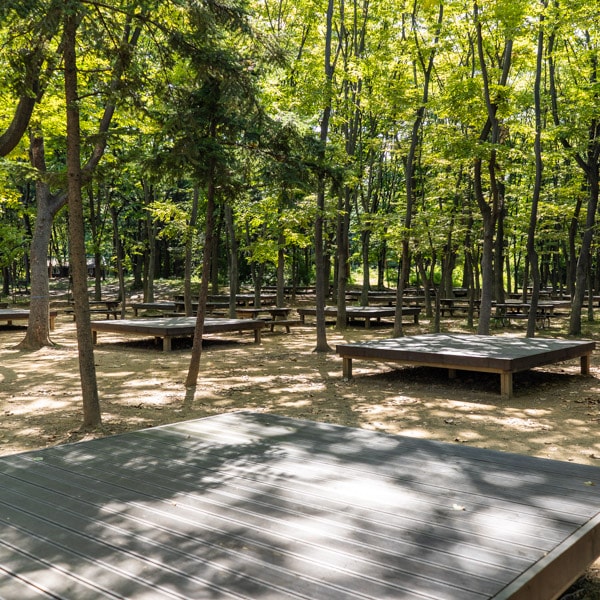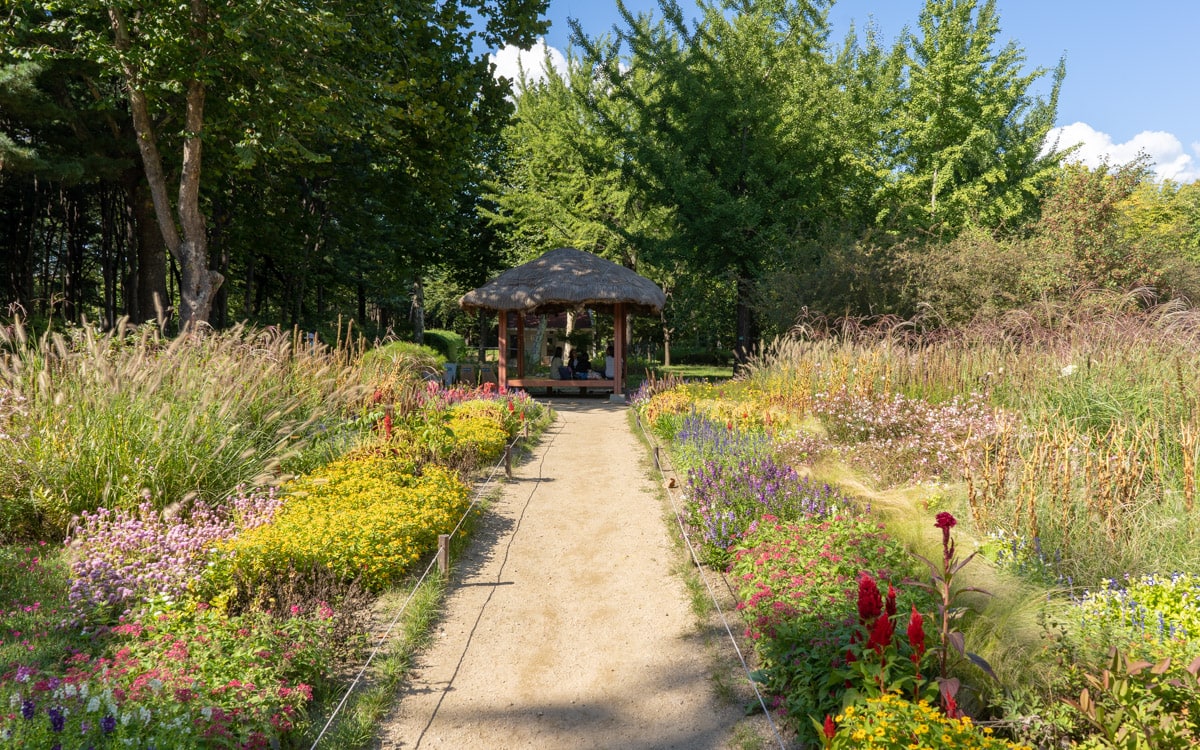
Yangjae Citizens’ Forest is a lush public park located in the neighborhood of Yangjae-dong in southern Seoul. In 1980, the land where the park today is located was acquired through the Gaepo-dong Land Arrangement Plan. The goal of this plan was to beautify the city and provide a pleasant recreation area for the citizens of Seoul. Three years later, in 1983, construction on the park began and continued for three years. In November, 1986, Yangjae Citizens’ Forest was unveiled to the public, just in time for the 1986 Asian Games and 1988 Seoul Olympics.
Built for the both the citizens of Seoul and visitors, Yangjae Citizens’ Forest is a rare wooded oasis and natural sanctuary in the middle of the city. With over 100,000 planted trees, the park is the perfect place to relax among dense forests and open green spaces.
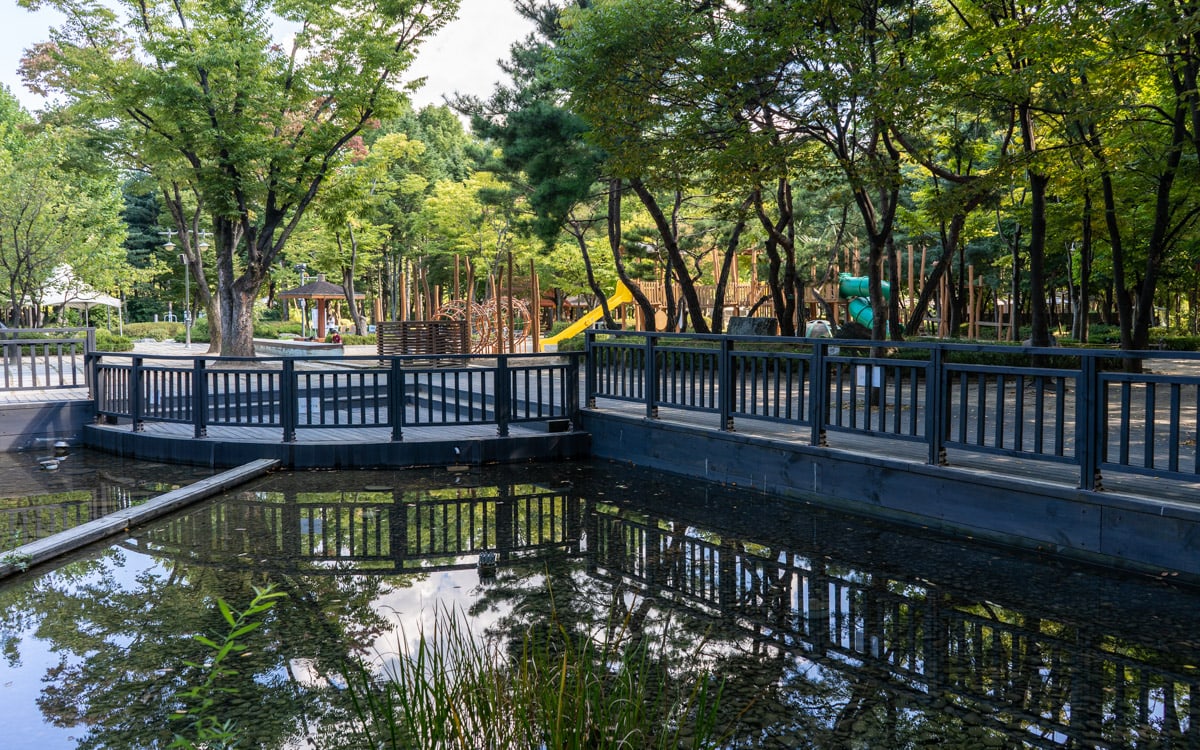
Yangjae Citizens’ Forest is 358,992 square meters (88.70 acres) in size. The park is separated into a northern section and a southern section. In the northern you can find tennis courts, an outdoor stage, children’s playground, snack stand, convenience store, barefoot park, barbecue area, and outdoor wedding area. It is also here where you will find the Statue of Yun Bong-gil and the Memorial Hall for the Patriot Maeheon Yun Bong-gil Memorial. In the southern section are multiple memorials including the Korean Air Flight 858 Memorial and Sampoong Department Store Memorial.
In the autumn, Yangjae Citizens’ Forest is popular for its beautiful fall colors.
Table of Contents
What to see at Yangjae Citizens’ Forest
Korean Air Flight 858 Memorial
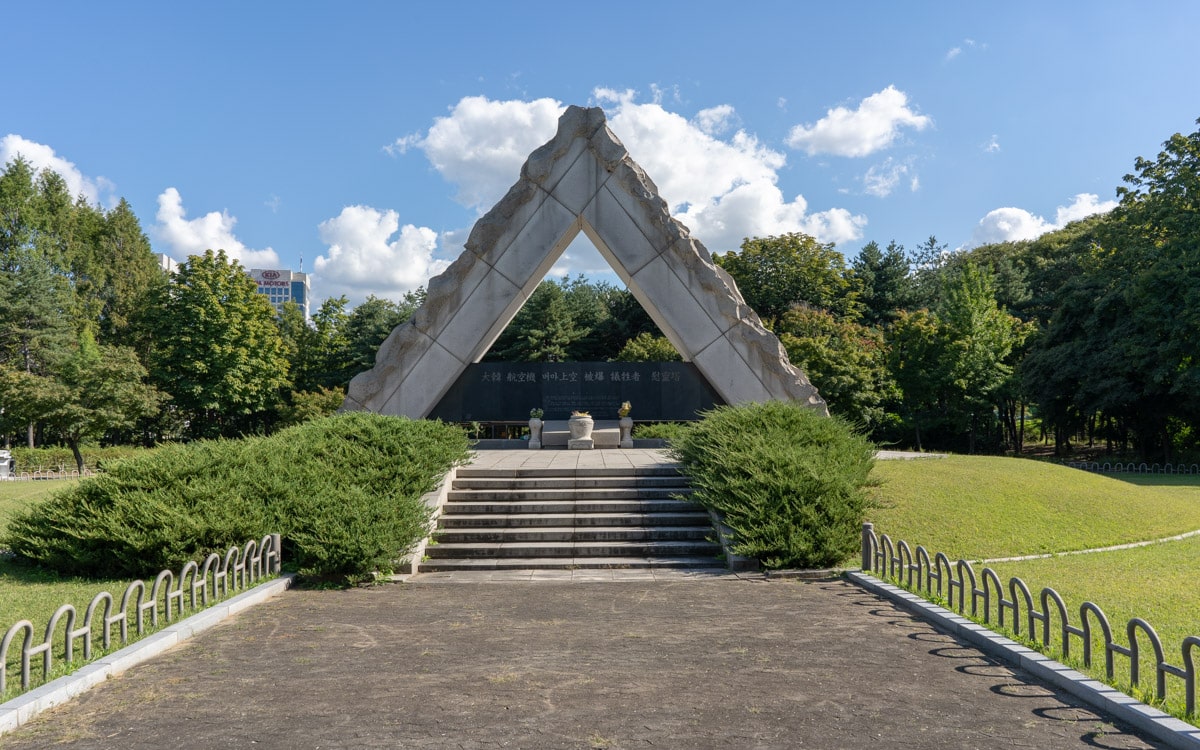
The Korean Air Flight 858 Memorial honors the 115 passengers who died aboard Korean Air Flight 858. On 29 November 1987, a bomb planted by two North Korean agents exploded aboard the Korean Air Boeing 707 while in flight over the Andaman Sea between Abu Dhabi, United Arab Emirates, and Bangkok, Thailand. A total of 104 passengers and 11 crew members were killed in the attack. This memorial was erected at Yangjae Citizens’ Forest in their honor with the hope of never forgetting those lost in this terrible tragedy.
Sampoong Department Store Memorial
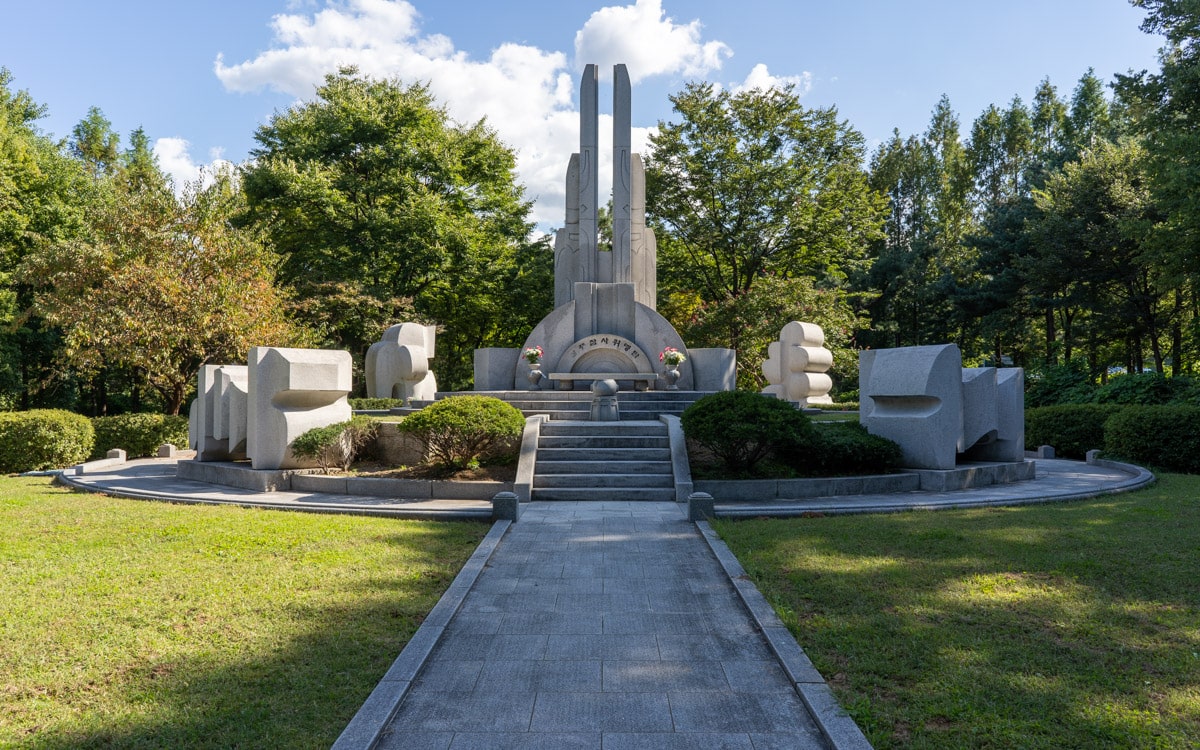
The Sampoong Department Store Memorial is dedicated to the 502 people who tragically died after the collapse of the Sampoong Department Store on June 29, 1995. Construction on the Sampoong Department Store began in 1987 and was completed in 1989. The company in charge of construction blatantly ignored multiple safety measures, so much so that the building’s support columns were supporting four times their maximum weight. In the months, days, and hours leading to the collapse, cracks began to form in the ceilings and roof. At 5:52PM on June 29, 1995, the structure failed causing the department store to collapse on itself. In the end, 502 people were killed and 937 were injured, making it the one of the deadliest non-deliberate building collapses in history.
This 12 meter (39.3 foot) marble memorial was created in memory of the collapse and all killed and injured. The memorial, which was funded by the Sampoong Group, was designed by Kim Bong-gu, an Ewha Womans University professor and sculptor.
Statue of Yun Bong-gil
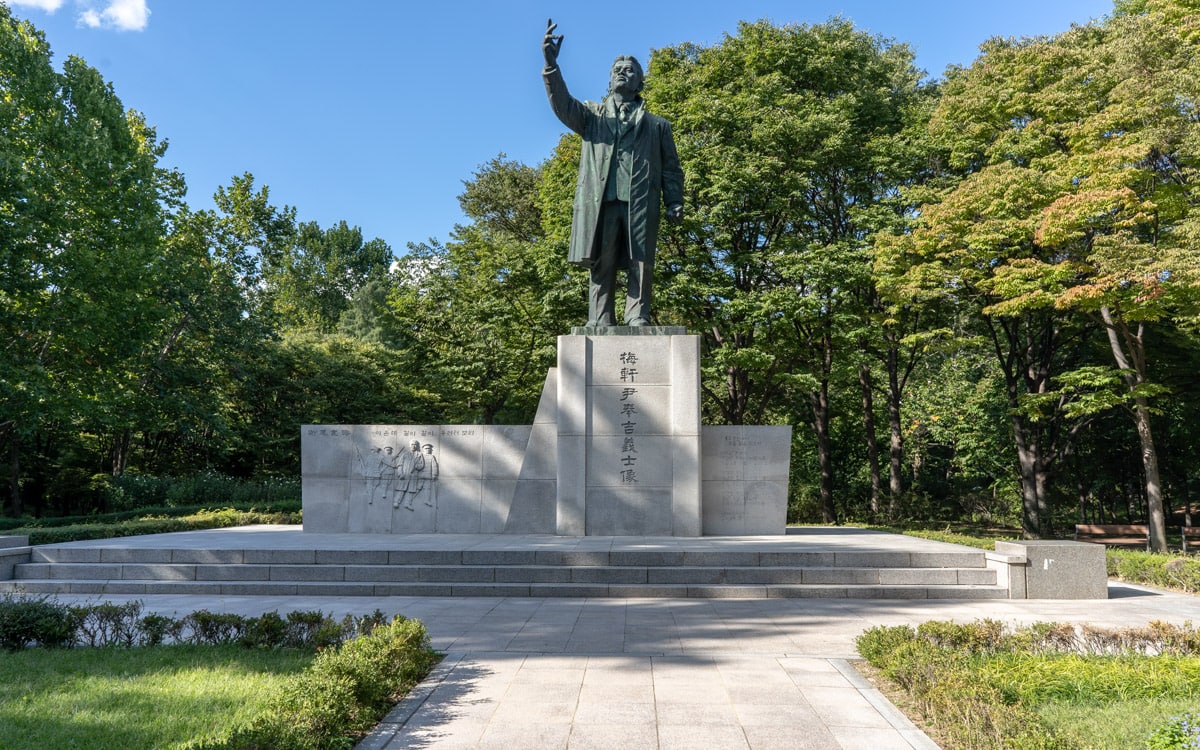
The Statue of Yun Bong-gil honors a Korean independence activist known best for a bombing incident in Shanghai that killed several Japanese dignitaries. Yun was born on June 21, 1908 in Yesan County near the end of the Korean Empire (1897–1910). During Yun’s childhood, Japan formally annexed Korea. Local resistance against Japan grew over the years, eventually leading to the March 1st Korean Independence Movement at Pagoda Park where Korean protesters and activists were massacred by the Japanese.
By the time Yun was 18 in 1926, he had become an independence activist who became involved in many rural social movements. After being arrested by the Japanese Secret police, Yun fled to Manchuria (northeastern China) in March 1930. He eventually made his way to Shanghai. On April 29, 1932, Yun detonated a bomb disguised as a water bottle inside Hongkew Park. Several Japanese admirals and generals were killed during a celebration of Emperor Hirohito’s birthday. After being arrested, Yun was convicted, sent to prison, and eventually executed by firing squad on December 19, 1932. In 1946, Yun’s body was moved from a cemetery in Kanazawa, Japan to Seoul National Cemetery.
On April 29, 1992, on the 60th anniversary of his death, the Statue of Yun Bong-gil was unveiled. The statue honors the patriotism and sacrifice of Yun and his fight for independence.
Maehun Yun Bong-Gil Memorial Hall
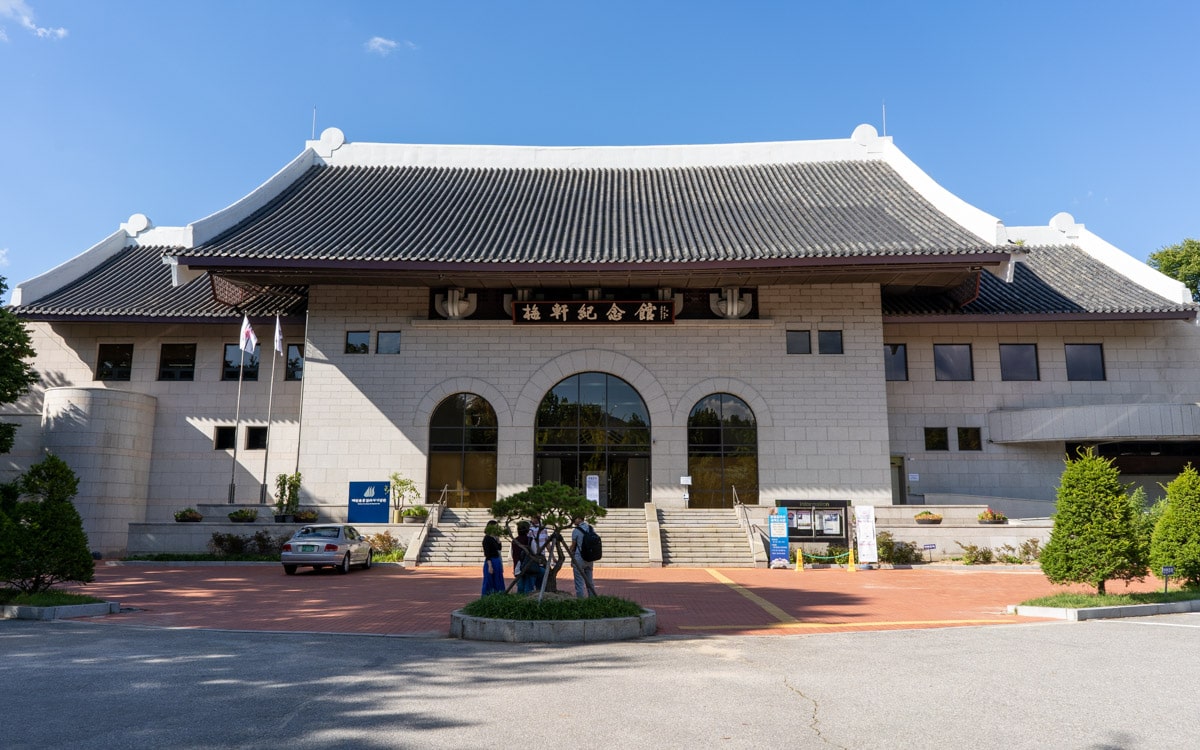
If you are interested in the life and history of Yun Bong-gil, be sure to stop by the Maehun Yun Bong-Gil Memorial Hall. This hall, which opened on December 1, 1988, is dedicated to independence activist Yun Bong-gil. On the first floor of the hall is an exhibition hall which displays both relics and biographical information of Yun Bong-gil. The second floor features photographs and other historical artifacts from the Korean independence movement. Entrance into the hall is free.
Memorial Monument to Baekma Guerrilla Corps
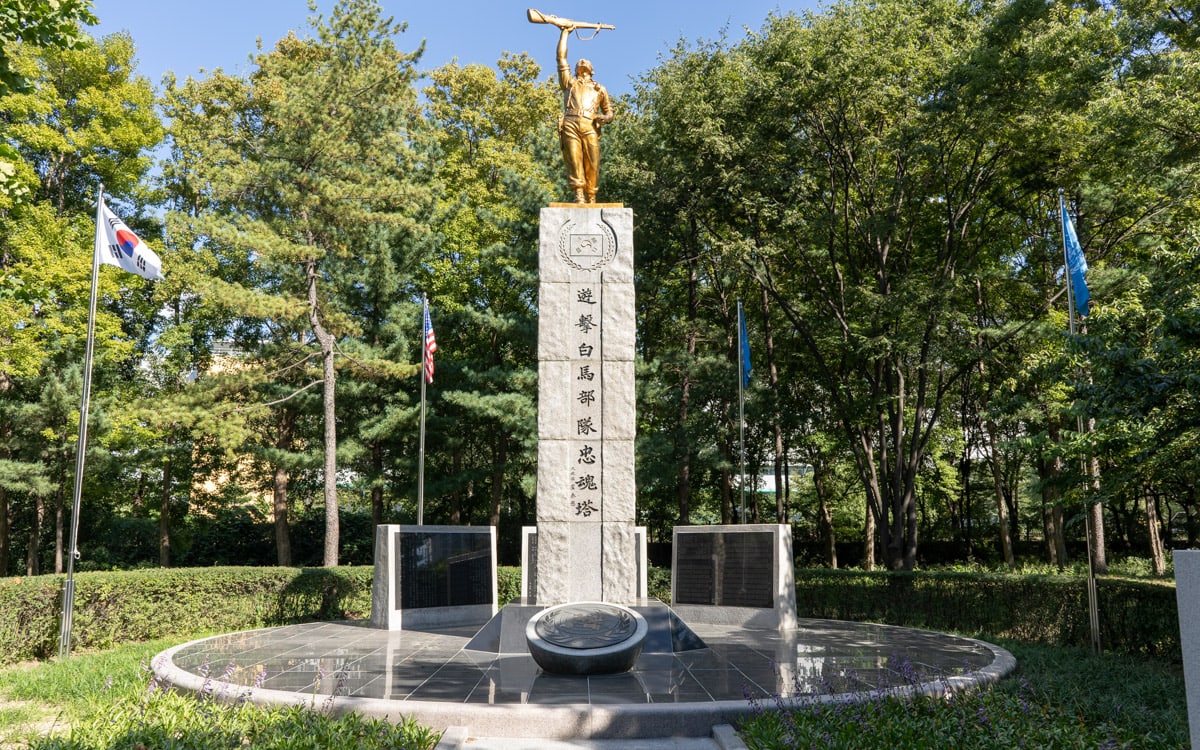
In October 1950, Chinese communists forced UN Allied Forces to retreat behind the 38th parallel. In response, 2,600 students and youths, led by Commander Kim Eung-Su, organized a guerilla corps known as Baekma (white horse).
Without military weapons, service numbers, or titles, these civilian youths fought in the Korean War with whatever they could find, including their bare hands. The Baekma Guerrilla Corps not only fought against the enemy but demolished train lines, tunnels, bridges, and other strategic military structures important to the enemy.
In the end, the guerrilla killed more than 3,000 enemy forces, captured over 18,000 enemies, and freed more than 18,0000 activists and civilians. In total, 552 Baekma Guerrilla Corps sacrificed their lives for their country.
In 1992, with help from donations and contributions, the Memorial Monument to Baekma Guerrilla Corps was unveiled at Yangjae Citizens’ Forest.
Yangjae Citizens Forest Hours
Yangjae Citizens' Forest
24 hours
Maehun Yun Bong-Gil Memorial Hall
April-October : 10:00-18:00
November-March : 10:00-17:00
Last entry 30 minutes prior to closing. Closed on Mondays, New Year's Day, Lunar New Year's Day, and Chuseok.
Admission
FreeHow to get to Yangjae Citizens Forest
Take Sinbundang Line to Yangjae Citizen's Forest Station (Exit 5).
Map
Additional Resources
Book Recommendation: Fodor’s Seoul
While The Seoul Guide provides plenty of information about traveling to Seoul, sometimes it helps to bring a book with you on your journey. Want to visit Gwangjang Market, hike Bukhansan National Park, visit an ancient palace, or sing karaoke all night long? The book I always recommend is Fodor's Seoul, which provides expert recommendations including sights to see, restaurant reviews, maps, and essential trip-planning information for everything related to Seoul.
Learn more about Fodor's Seoul
Rakuten
Save money while exploring Seoul with Rakuten's cashback program. By booking hotels through Rakuten, visitors can earn cashback rewards and enjoy significant savings. Exclusive partnerships and deals make stays in Seoul more affordable, freeing up funds for attractions, dining, and other experiences. I use Rakuten for cashback on all of my hotel stays in Seoul.
If you sign up using the link below, you will get $30 cashback after your first purchase over $30.
Klook
Klook is a reliable online platform offering discounted tickets and reservations for attractions and services in Seoul. It covers theme parks, museums, transportation, WiFi, tours, and more. Travelers can save time and money by booking through Klook's user-friendly interface, with secure transactions and helpful customer support.
If you sign up using the link below, you will get $5 off your first order.
Learn more about KlookLast Updated on Oct 21, 2023
